What is Polkadot? A beginner’s guide to the decentralized Web3 ecosystem
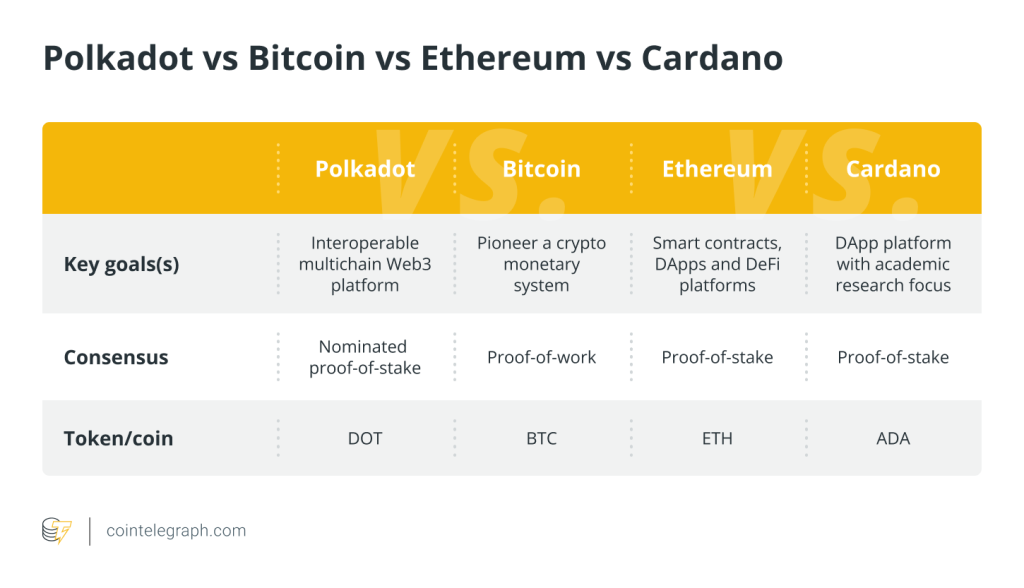

Polkadot is a next-generation blockchain network and, more generally, an ecosystem providing blockspace for all kinds of Web3 projects. It comprises a heterogeneous multichain framework and has garnered attention from a community of participants, developers and users. It is considered to be one of the most innovative projects in the cryptocurrency space.
Powered by DOT (DOT), the network’s native coin, the Polkadot ecosystem tries to resolve many of the limitations associated with blockchains, such as scalability, composability and security. Polkadot’s distinctive features help it stand out from the crowd and offer a solution enabling a wide array of real-world use cases.
The project was conceived in 2016 and, following the publication of its white paper written by founder Gavin Wood, the DOT token hit the market in August 2020. In June 2021, DOT was listed on Coinbase.
Why is Polkadot considered innovative? Generally, the unique properties of blockchains are decentralization, speed and security in a trustless environment. While most blockchains tend to offer one — or sometimes two — of these distinguishing traits, their architecture is not built to sustain all of the features at once.
Ethereum, for instance, is the most popular platform for decentralized applications (DApps). Still, it is currently not very scalable and carries exceptionally high fees, particularly when traffic on the platform is high. EOS, on the other hand, secures fast and zero-fee transactions at the expense of decentralization.
All these networks are isolated from one another, with little to no information exchanged between them. Think of banks, for example, that are not allowed to interact — we would not be able to transfer money smoothly from one bank to another.
Another example is emails. Their interoperability allows us to transfer information from a Yahoo to a Gmail account, for example. Currently, a lack of interoperability is preventing the mass adoption of blockchain technology. Polkadot aims to bridge this gap.
What is the Polkadot network in crypto?
In simple terms, Polkadot is a blockchain ecosystem with a core network — the Relay Chain, where other blockchains and their respective DApps connect and communicate with one another. By hosting blockchains, the Relay Chain also handles their security and transactions, allowing cross-chain composability (modular communication between different blockchains) to function seamlessly.
Through interoperability, Polkadot tries to resolve one of blockchain’s major flaws. Instead of existing as separate entities that work independently, blockchains can instead become part of the same ecosystem where not only information and money but also computer programs themselves can be exchanged securely in a scalable way.
While private blockchains have somewhat different technical protocols from public blockchains, Polkadot even resolves the communication between these two distinct types of networks.
Polkadot’s flexible and adaptive network architecture facilitates the onboarding process for new Web3 enterprises, enabling developers to take advantage of the scalability, interoperability and security offered. Therefore, Polkadot’s network also represents a significant breakthrough for developers and entrepreneurs who want to build any Web3 project from scratch, offering a fast time to market.
When trying to create a new blockchain, developers build a unique state machine and a consensus algorithm, which are not easy to implement and take a lot of time and effort. Polkadot’s fundamental architecture aims at resolving this as it eliminates the need to build common blockchain components from scratch.
A blockchain built within Polkadot uses the Substrate modular framework, which allows users to plug in the features they require while also allowing them to change them as needed. Moreover, it allows developers to customize the chain architecture and select specific components that suit their requirements. Should they wish, they can also connect to other ecosystems, including Ethereum and Bitcoin, via cross-ecosystem bridges.
History of the Polkadot network
The network’s name is already unique: a polka dot pattern on fabric consists of an array of circles of no fixed order, size or pattern. Together, polka dots represent, symbolically, a decentralized infrastructure.
The history of Polkadot is closely associated with Ethereum. Its founder is Gavin Wood, who was the chief technology officer and core developer of Ethereum. He developed its smart contract programming language, Solidity, before leaving in 2016 to build Polkadot, initially envisaged as a sharded blockchain, and in October of the same year, he published Polkadot’s white paper.
While still at Ethereum, Wood co-founded the EthCore Blockchain Technology Company, which later turned into Parity Technologies. The company developed important blockchain infrastructure technology, such as the Parity Ethereum client, the Substrate development framework and the Polkadot network.
In 2017, Wood also co-founded the Web3 Foundation, a nonprofit entity established to support the research and development of Polkadot and oversee its fundraising efforts. In October, the foundation hosted an initial coin offering (ICO) and raised $145 million in just under two weeks, making it one of the largest ICOs at the time.
In the following months, through a private sale, the Web3 Foundation team continued to raise funding to help it meet its development goals.
How does Polkadot work?
As mentioned in the article, Polkadot provides a core network, the Relay Chain and parallel blockchains called parachains.
Let’s take a closer look at the network’s architecture, the system’s technical components and how they work in conjunction.
The Relay Chain’s protocol determines the network’s shared security, consensus and cross-chain interoperability. It is the engine that keeps the whole infrastructure together, connecting other network participants and providing transaction finality.
The Relay Chain was deliberately built to host minimal functionality. For instance, smart contracts are not directly supported, and the chain’s primary responsibility lies in the coordination of the system as a whole, including parachains. This frees up capacity by outsourcing functionality to relevant parachains.
Parachains
The term parachain is short for parallelized chains. Each parachain is an entire blockchain in itself, with its own logic and features. They function in a sovereign way with their tokens and governance and offer their specific use cases.
However, parachains use and take advantage of the Relay Chain’s security and interoperability for the finality of transactions. The use of the Relay Chain allows each parachain’s system to work seamlessly, while developers and users focus on other specific goals like privacy or scalability and their particular applications.
In essence, parachains get to enjoy one of the network’s most significant benefits: using Polkadot’s established security alongside fast and scalable transaction speeds.
Currently, parachains need to lease slots on Polkadot to participate in the network, and the network is expected to support around 100 slots with its current architecture. However, plans are already in place to offer more flexible, cost-efficient ways of connecting to Polkadot and to extend its capacity up to 1,000 parachains. Currently, there are three ways to gain a slot allocation:
Polkadot blockspace
Wood has envisioned a future of Polkadot as an ecosystem that supports blockspace in general, not just blockchains, meaning DApp developers will be able to benefit from the established shared security of the network without building a whole parachain.
In June 2023, he announced a roadmap that included additional, more flexible and capital-efficient mechanisms for allocating Polkadot’s blockspace beyond the parachain model.
Polkadot’s blockspace will fit a project’s bespoke needs, allowing teams to combine different types of blockspace from multiple sources to create new use cases. Projects will have timely access to expanded blockspace, enabling an uninterrupted flow of bandwidth even during periods of heavy congestion — great against spiking fees or congestion on other networks.
Polkadot’s blockspace will be continuously available, with pricing based on demand and capacity.
Projects will always have the option of communicating with external networks like Bitcoin and Ethereum via bridges, thereby further expanding the interoperability of Polkadot. Bridges can enable different tokens and coins to be swapped without a central exchange.
Governance
Governance in a blockchain is how changes to the code are decided upon, implemented and enforced. It can be intended as the integration of the norms and the code, the people and the institutions that facilitate the existence of a given organization.
Polkadot introduced OpenGov in June 2023 to hand over full voting powers to the community. Changes to the protocol, such as referenda with flexible super-majority thresholds and batch approval voting, can only be made through OpenGov.
Polkadot’s governance model allows the implementation of seamless protocol updates without resorting to hard forks.
Polkadot’s OpenGov ecosystem introduced the Polkadot Fellowship, an open, embedded technical expert body, to which any DOT holder with technical expertise can get elected.

The Fellowship is tasked with protecting the network and can declare certain proposals as safe, malicious or time critical, therefore facilitating quicker bug fixes or identifying malicious ones.
Consensus
Consensus represents a mechanism for reaching a mutual understanding regarding a shared blockchain state. To ensure the continuous progression and development of the blockchain’s state, it is imperative that all network nodes reach a unanimous agreement and achieve consensus.
Polkadot employs nominated proof-of-stake (NPoS) as its validator set selection mechanism, strategically defining the roles of validators and nominators to enhance chain security to its fullest extent.
Tokenomics
The DOT token is what powers the network, being Polkadot’s native coin. It is used for paying network fees, connecting parachains to the network, governance voting, validating rights and staking.
To message or exchange data between two blockchains in the network, previously purchased blockspace is used. Blockspace can be purchased either in bulk or instantaneously. Voting on protocol updates or fixes also occurs by temporarily bonding DOT.
Nominators also stake their DOT with a dedicated validator they are backing. Staking tokens helps to increase the network’s attack cost and allows DOT holders to earn newly minted tokens as staking rewards.
Substrate, the blockchain development framework
Substrate is Polkadot’s powerful blockchain framework that makes building a new blockchain significantly easier. It is designed to help developers build their unique blockchain while connecting to the Relay Chain and enjoying its security, speed and efficiency. The design allows developers to focus on adding value to their projects instead of spending resources and funds on building every piece of infrastructure from scratch.
All chains that use Substrate are compatible with Polkadot and can access the interoperable ecosystem of parachains, applications and resources.
The pioneers of the blockchain industry who created Substrate envisioned a system that could overcome the limitations of previous-generation networks. They intended to offer developers a software development kit that avoided the requirement to develop and optimize a blockchain from its foundations.
Although synergetic, Polkadot and Substrate are not dependent on each other. Polkadot parachains can be built and maintained with alternative software options than Substrate, while chains made with Substrate do not need to be connected to Polkadot or Kusama.
Kusama, the experimental development platform
Kusama is Polkadot’s canary network, used for early-stage deployments, as a live pre-production environment and as a network for experimentation. After deploying first on test networks, developers can then launch their chains or DApps on Kusama for risk mitigation and battle testing under live, real-world conditions before going live as a production network on Polkadot.
Kusama has a lower economic barrier to entry than Polkadot; therefore, launching a parachain or becoming a validator is much easier and requires less DOT.
Governance on Kusama moves at a faster pace than on Polkadot to enable battle testing of new features before they are deployed to Polkadot. Kusama is up to four times faster than Polkadot. All it needs is seven days for tokenholders to vote on a referendum, followed by a validation period of eight days, after which the referendum will be ratified on the chain.
Kusama’s motto is “expect chaos” since its faster upgrade rate can come at the expense of stability, which means stakeholders must keep vigilant to follow up on all the proposals, referenda and upgrades. At the same time, validators on Kusama often need to update on short notice.
Polkadot vs. Bitcoin
The Polkadot network and Bitcoin are somewhat different in the functionality and goals they aim to achieve. Whereas Bitcoin is en route to becoming the first global decentralized network for the storage of value, Polkadot seeks to offer the most viable platform for all kinds of Web3 applications. It provides a multichain platform that allows secure interoperability among blockchains, including token and data exchange as well as programming advanced multichain applications.
An enterprise choosing Polkadot looks for a blockchain network protocol to enable arbitrary data to be transferred across blockchains.
From a technological perspective, the main difference is in the mining and minting process and consensus algorithm. Bitcoin uses proof-of-work, and Polkadot adopts a more energy-efficient NPoS model that we’ve explained earlier in this guide.
Polkadot vs. Ethereum
Ethereum is a smart contract platform and strives to be a blockchain for distributed finance. On the other hand, Polkadot offers a structure for building specialized blockchains easily, each of which can host its own smart contracts, like Ethereum, with the ability to connect across different networks.
Both platforms are designed for developers who want to build DApps, and both seek to fix scalability with a multi-layer architecture, with Ethereum layer-2 rollups being roughly similar to Polkadot parachains. However, the difference is that Ethereum rollups do not offer shared security or true interoperability, which parachains do, and Ethereum layer-2 networks are typically less decentralized.
Both Polkadot and Ethereum are based on proof-of-stake, a more energy-efficient way of securing blockchains than proof-of-work. Polkadot uses a special system called NPoS, which has added benefits around security, decentralization and fair representation and is more accessible to smaller stakerholders with fewer tokens to contribute.
Polkadot vs. Cardano
Both Cardano and Polkadot were designed to address some of the inherent limitations of Ethereum. They also both share a history with Ethereum since they were both conceived by prominent members of the early Ethereum team.
Cardano is another next-generation blockchain platform that focuses on DApp development. It is a proof-of-stake blockchain platform and the first to be founded on peer-reviewed research and developed through evidence-based methods. It combines pioneering technologies to provide security and sustainability to decentralized applications, systems and societies.

The future for Polkadot
Considering the overall benefits for entrepreneurs, developers, users and investors, it looks like Polkadot’s evolution will be interesting to follow.
DOT serving as the protocol’s governance token as well as for staking to secure the network or bond new chains is a clear indication that the project aims at incentivizing usage by rewarding participants. Indeed, staking DOT has become one of the most valuable incentives in the crypto space, with an annual yield of 14% on average.
The platform’s stable and reliable network, along with its roadmap adherence, contributes to a promising scenario for the project. From the perspective of technology and economic value, Polkadot is among the most ingenious innovations in the blockchain industry. Also, from an ecosystem perspective, Polkadot has seen major growth in recent years, with numerous high-caliber projects building on Polkadot. Therefore, the next few months will be crucial to estimating the network’s actual capabilities.


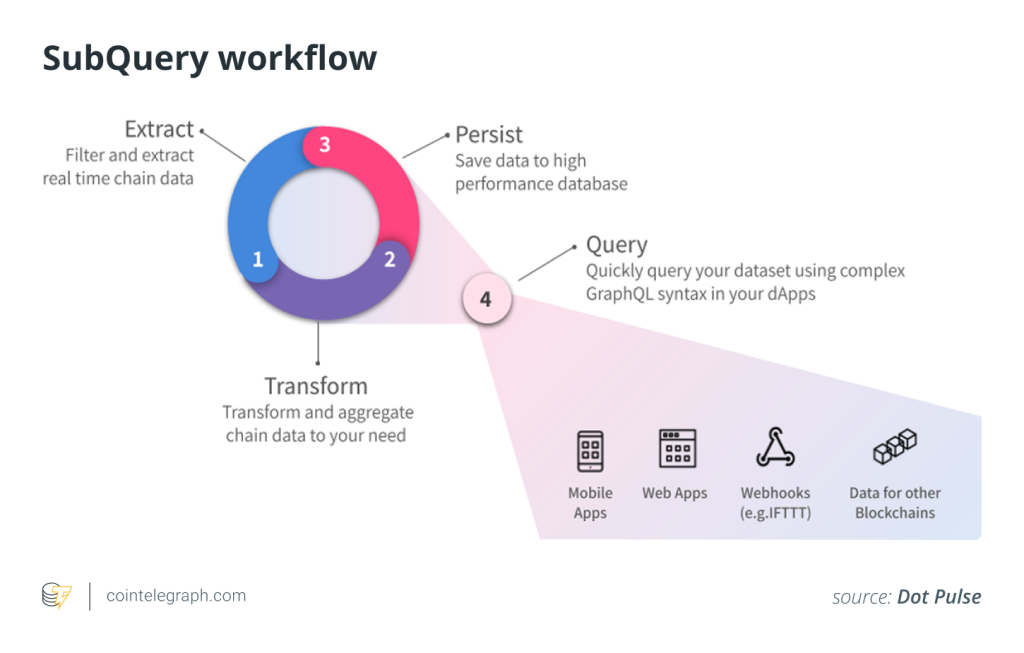
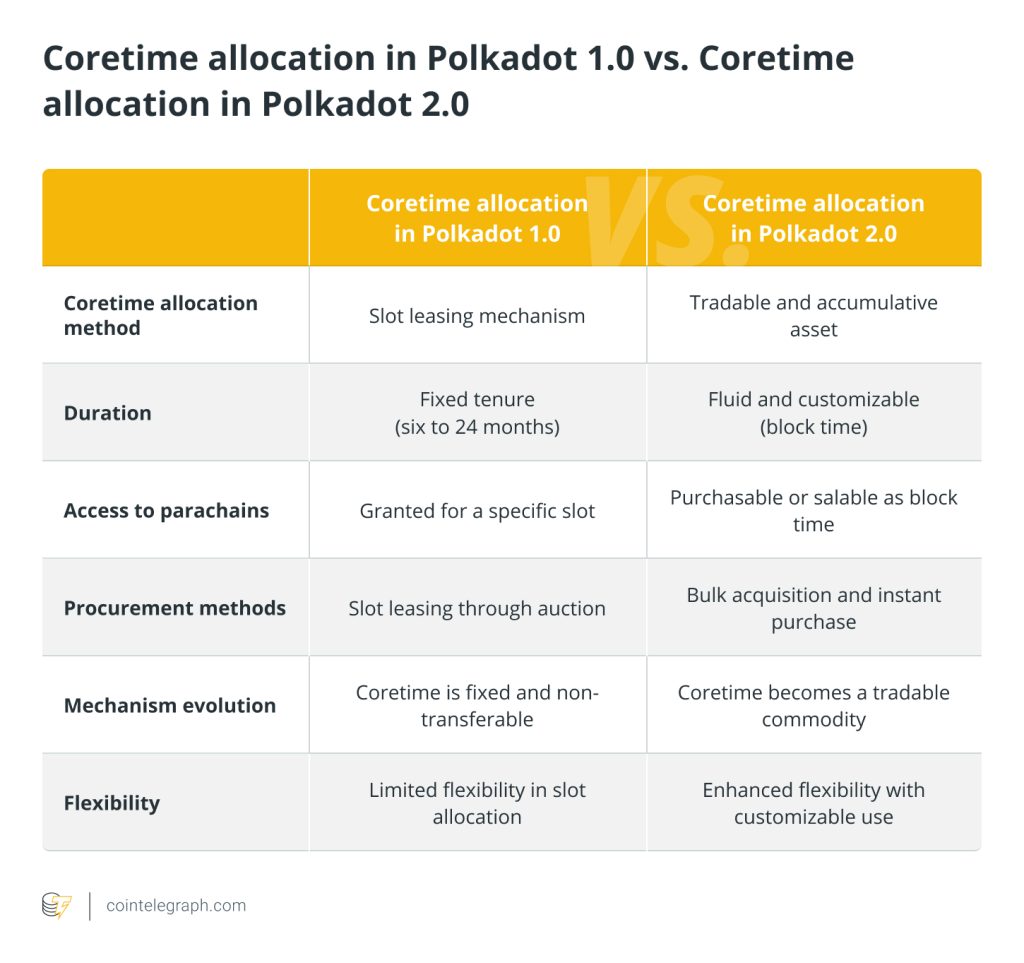
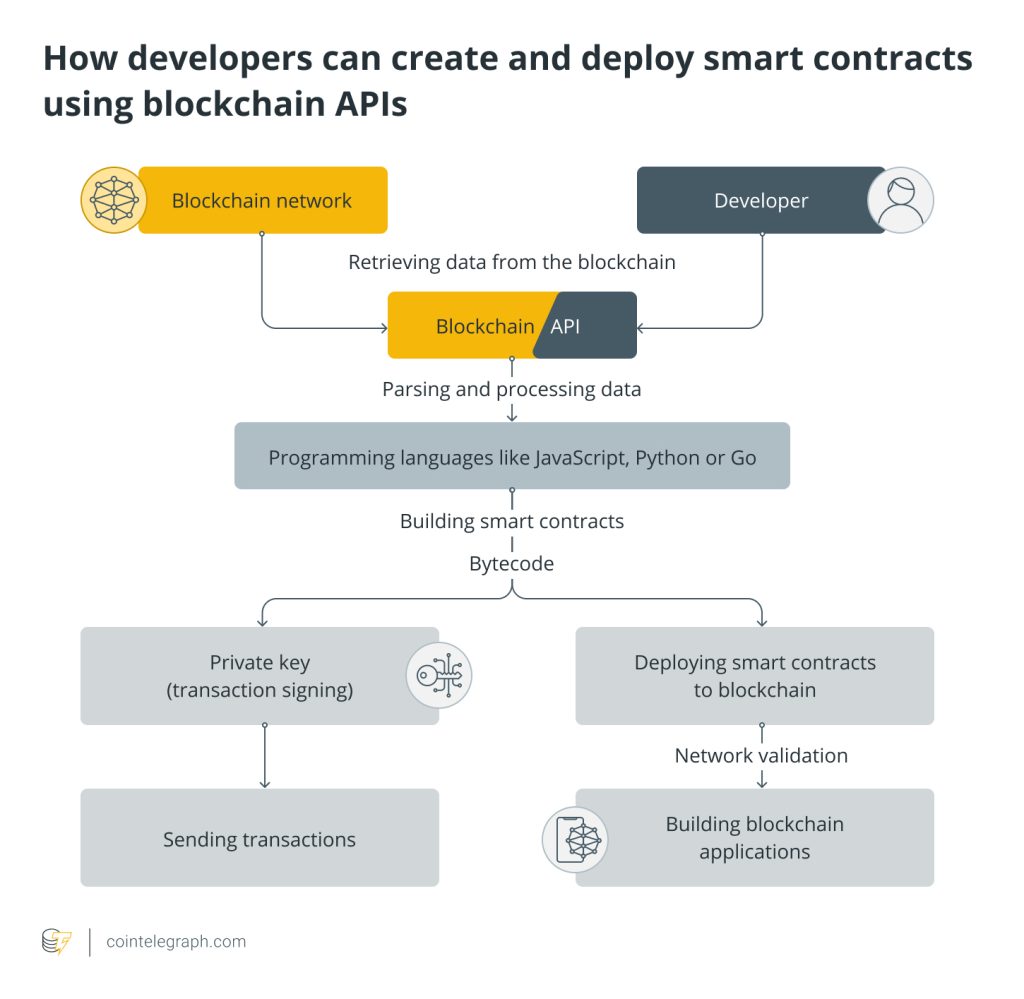
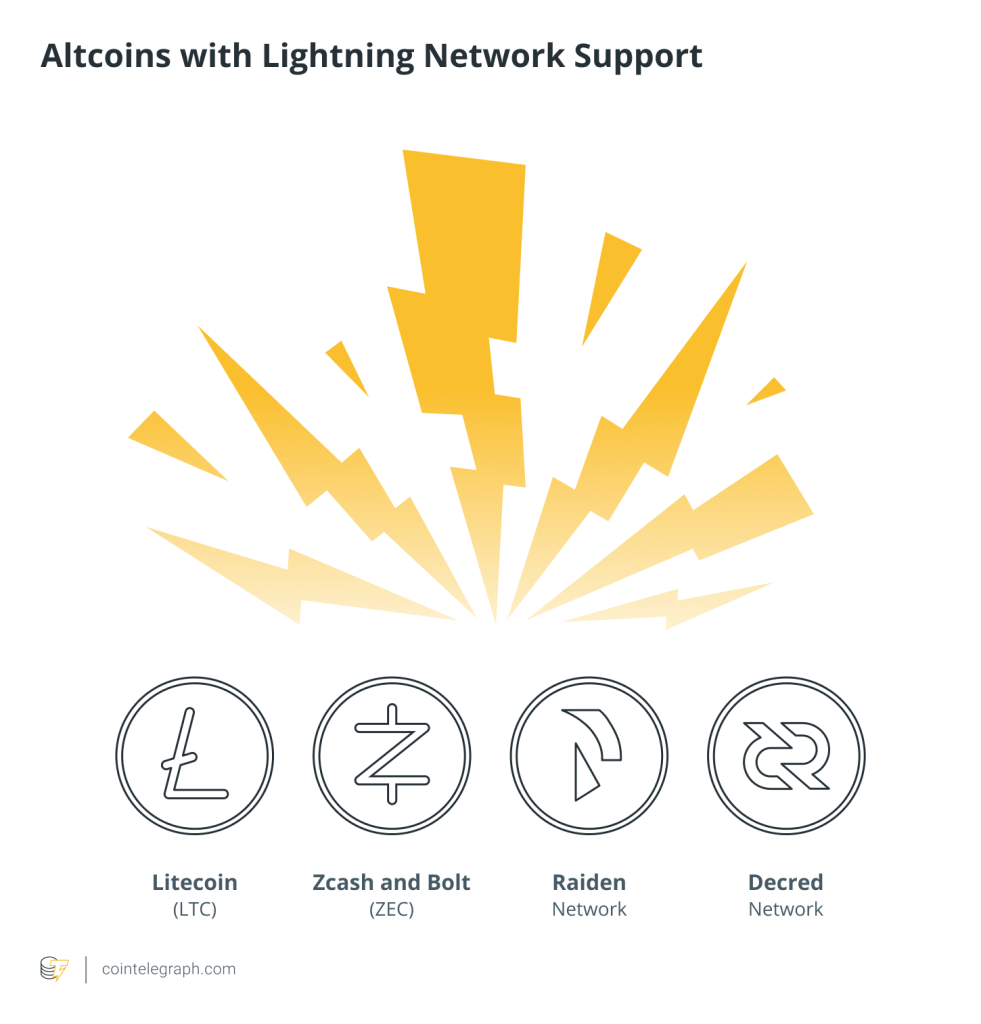
… [Trackback]
[…] Read More to that Topic: x.superex.com/academys/beginner/3302/ […]
… [Trackback]
[…] Here you will find 53199 more Information to that Topic: x.superex.com/academys/beginner/3302/ […]
… [Trackback]
[…] Find More to that Topic: x.superex.com/academys/beginner/3302/ […]
… [Trackback]
[…] Read More Info here to that Topic: x.superex.com/academys/beginner/3302/ […]
… [Trackback]
[…] Find More on that Topic: x.superex.com/academys/beginner/3302/ […]
… [Trackback]
[…] Here you can find 43194 additional Information on that Topic: x.superex.com/academys/beginner/3302/ […]
… [Trackback]
[…] Find More Info here to that Topic: x.superex.com/academys/beginner/3302/ […]
… [Trackback]
[…] Find More on that Topic: x.superex.com/academys/beginner/3302/ […]
… [Trackback]
[…] Info on that Topic: x.superex.com/academys/beginner/3302/ […]
… [Trackback]
[…] Here you will find 52779 additional Information to that Topic: x.superex.com/academys/beginner/3302/ […]
… [Trackback]
[…] Here you can find 21590 additional Information on that Topic: x.superex.com/academys/beginner/3302/ […]
… [Trackback]
[…] Find More here on that Topic: x.superex.com/academys/beginner/3302/ […]
… [Trackback]
[…] Find More on on that Topic: x.superex.com/academys/beginner/3302/ […]
… [Trackback]
[…] Read More here on that Topic: x.superex.com/academys/beginner/3302/ […]
… [Trackback]
[…] Find More Info here to that Topic: x.superex.com/academys/beginner/3302/ […]
… [Trackback]
[…] Read More here to that Topic: x.superex.com/academys/beginner/3302/ […]
… [Trackback]
[…] Info to that Topic: x.superex.com/academys/beginner/3302/ […]
… [Trackback]
[…] Info to that Topic: x.superex.com/academys/beginner/3302/ […]
… [Trackback]
[…] Find More on that Topic: x.superex.com/academys/beginner/3302/ […]
… [Trackback]
[…] There you will find 69469 more Information on that Topic: x.superex.com/academys/beginner/3302/ […]
… [Trackback]
[…] Here you can find 71572 more Information to that Topic: x.superex.com/academys/beginner/3302/ […]
… [Trackback]
[…] Find More here to that Topic: x.superex.com/academys/beginner/3302/ […]